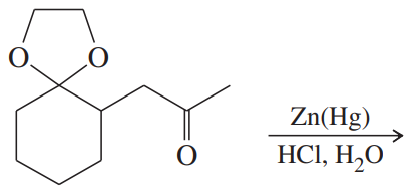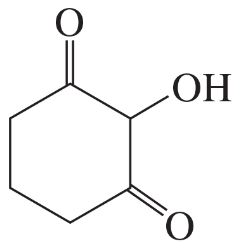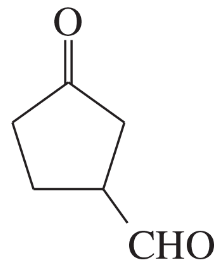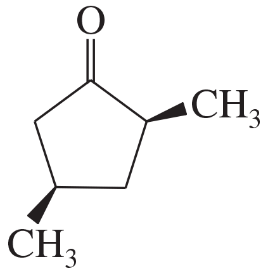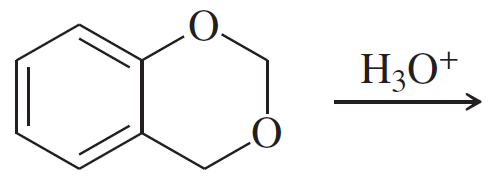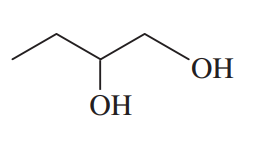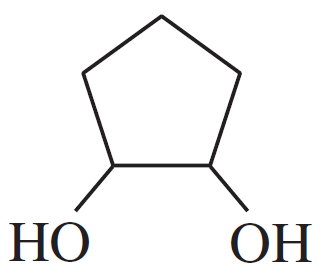 Back
BackProblem 36d
Predict the major products of the following reactions:
(d)
Problem 37a
Draw structures of the following derivatives.
(a) the 2,4-dinitrophenylhydrazone of benzaldehyde
Problem 37b
Draw structures of the following derivatives.
(b) the semicarbazone of cyclobutanone
Problem 37c
Draw structures of the following derivatives.
(c) cyclopropanone oxime
Problem 37d
Draw structures of the following derivatives.
(d) the ethylene acetal of hexan-3-one
Problem 37e
Draw structures of the following derivatives.
(e) acetaldehyde dimethyl acetal
Problem 37f
Draw structures of the following derivatives.
(f) the methyl hemiacetal of formaldehyde
Problem 37g
Draw structures of the following derivatives.
(g) the (E) isomer of the ethyl imine of propiophenone
Problem 37h
Draw structures of the following derivatives.
(h) the hemiacetal form of 5-hydroxypentanal
Problem 38b
Name the following ketones and aldehydes. When possible, give both a common name and an IUPAC name.
(b) CH3(CH2)2CO(CH2)2CH3
Problem 38c
Name the following ketones and aldehydes. When possible, give both a common name and an IUPAC name.
(c) CH3(CH2)5CHO
Problem 38d
Name the following ketones and aldehydes. When possible, give both a common name and an IUPAC name.
(d) PhCOPh
Problem 38g
Name the following ketones and aldehydes. When possible, give both a common name and an IUPAC name.
(g) CH3CH2CHBrCH2CH(CH3)CHO
Problem 38h
Name the following ketones and aldehydes. When possible, give both a common name and an IUPAC name.
(h) Ph–CH=CH–CHO
Problem 38j
Name the following ketones and aldehydes. When possible, give both a common name and an IUPAC name.
(j)
Problem 38k
Name the following ketones and aldehydes. When possible, give both a common name and an IUPAC name.
(k)
Problem 38l
Name the following ketones and aldehydes. When possible, give both a common name and an IUPAC name.
(l)
Problem 39a
Predict the major products of the following reactions.
(a)
Problem 39b
Predict the major products of the following reactions.
(b)
Problem 39c
Predict the major products of the following reactions.
(c)
Problem 39d
Predict the major products of the following reactions.
(d)
Problem 39e
Predict the major products of the following reactions.
(e)
Problem 39f
Predict the major products of the following reactions.
(f)
Problem 39g
Predict the major products of the following reactions.
(g)
Problem 39h
Predict the major products of the following reactions.
(h)
Problem 39i
Predict the major products of the following reactions.
(i)
Problem 39j
Predict the major products of the following reactions.
(j)
Problem 40
Rank the following carbonyl compounds in order of increasing equilibrium constant for hydration:
CH3COCH2Cl ClCH2CHO CH2O CH3COCH3 CH3CHO
Problem 41a
Acetals can serve as protecting groups for 1,2-diols, as well as for aldehydes and ketones. When the acetal is formed from acetone plus the diol, the acetal is called an acetonide. Show the acetonides formed from these diols with acetone under acid catalysis.
Problem 41b
Acetals can serve as protecting groups for 1,2-diols, as well as for aldehydes and ketones. When the acetal is formed from acetone plus the diol, the acetal is called an acetonide. Show the acetonides formed from these diols with acetone under acid catalysis.

